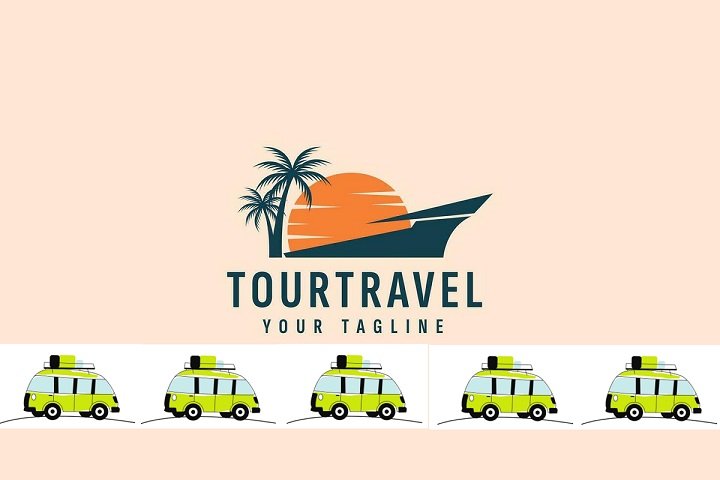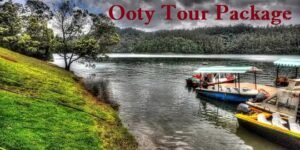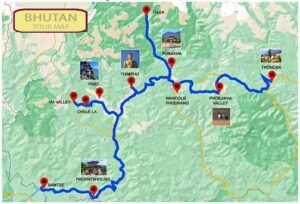Tour Logo :The Ultimate Guide to Designing a Memorable Tour Logo

tour logo
The Ultimate Guide to Designing a Memorable Tour Logo
A tour logo is more than just a design—it’s the face of your brand and the first impression you make on your audience. Whether you’re a travel agency, a touring musician, or a sightseeing guide, a well-designed tour logo communicates your identity, values, and professionalism. This guide will cover everything you need to know about creating a memorable tour logo, including design principles
Why Is a Tour Logo Important?
1. Brand Recognition
A tour logo serves as a visual anchor for your brand. A strong logo makes your business easily recognizable and helps it stand out in a competitive market.
2. Trust and Professionalism
Customers associate a well-designed logo with quality and credibility. A polished tour logo reassures potential clients that your services are reliable and professional.
3. Marketing and Promotion
A versatile tour logo can be used across various platforms—websites, brochures, merchandise, and vehicles. This consistency strengthens your brand identity and aids in effective marketing.
Key Elements of a Memorable Tour Logo
1. Simplicity
The best logos are clean and easy to understand. Avoid clutter and focus on core elements that represent your brand.
2. Relevance
Your logo should reflect the essence of your business. For example, a travel agency might include symbols like a compass or an airplane, while a band on tour might incorporate music-related imagery.
3. Typography
The font style conveys your brand’s tone—whether adventurous, elegant, or fun. Choose a font that aligns with your audience’s expectations.
4. Color Palette
Colors evoke emotions and convey messages. Blue suggests trust and reliability, while green can represent nature and sustainability. Select colors that align with your brand’s values.
5. Scalability
Ensure your logo looks great in all sizes, from small business cards to large banners.
Steps to Create the Perfect Tour Logo
Step 1: Define Your Brand Identity
Before designing, clarify what your brand stands for. Ask yourself:
- What is your target audience?
- What emotions should your logo evoke?
- What makes your tour unique?
Step 2: Research Your Industry
Analyze competitors’ logos to identify trends and gaps. This research can spark ideas and ensure your design stands out.
Step 3: Sketch and Brainstorm
Start with rough sketches. Experiment with symbols, typography, and layouts. At this stage, quantity matters—generate multiple ideas.
Step 4: Choose the Right Tools
You can use professional design software like Adobe Illustrator or online platforms like Canva and Looka.
Step 5: Test Your Design
Gather feedback from colleagues, clients, or focus groups. Ask them about clarity, relevance, and overall appeal.
Step 6: Finalize and Optimize
Polish your design and save it in various formats (JPEG, PNG, SVG) to ensure compatibility across platforms.
Common Mistakes to Avoid
- Overcomplicating the Design
Too many details can confuse the viewer. Stick to simple, impactful elements. - Ignoring Target Audience Preferences
A logo aimed at millennials might differ significantly from one targeting retirees. Tailor your design accordingly. - Poor Color Choices
Bright or clashing colors can be off-putting. Use a harmonious palette. - Lack of Versatility
Ensure the logo works in black-and-white and colored versions.
Tour Logo Inspiration
Travel and Tourism
- Example: A globe encircled by an airplane and a tagline underneath.
- Key Elements: World map, suitcase, compass.
Music and Entertainment Tours
- Example: A guitar integrated with a soundwave.
- Key Elements: Instruments, microphones, or abstract sound patterns.
Eco-Tourism
- Example: A tree inside a circle with a mountain backdrop.
- Key Elements: Leaves, rivers, and wildlife icons.
Design Trends for Tour Logos in 2024
| Trend | Description | Example |
|---|---|---|
| Minimalism | Clean designs with fewer elements to improve recognition. | Simple compass logo with clean lines. |
| Gradient Color Schemes | Use of modern gradients for a vibrant, dynamic look. | Sunset-inspired gradient in logo designs. |
| Hand-Drawn Elements | Organic and authentic visuals that add personality. | A hand-drawn mountain sketch for a hiking tour. |
| Geometric Shapes | Balanced, symmetrical designs that convey professionalism. | A hexagon map icon with a travel route inside. |
| Custom Typography | Unique fonts designed to be both stylish and memorable. | Artistic script font for a music tour. |
Examples of Successful Tour Logos
| Company/Brand | Logo Description | What Makes It Work |
|---|---|---|
| National Geographic Tours | Yellow rectangular border with bold typography. | Simple, iconic, and easily recognizable. |
| G Adventures | A stylized “G” with a path winding through it. | Represents travel and exploration. |
| Live Nation | A clean, bold design with dynamic red and black tones. | Evokes energy and excitement. |
| Contiki | Modern font with a minimalist wave icon. | Reflects youthfulness and adventure. |
How to Ensure Your Logo Is SEO-Friendly
- Use Descriptive Alt Text
Include relevant keywords like “tour logo” in your image alt tags. - Optimize File Names
Save your logo with descriptive names, e.g., - Compress for Speed
Smaller file sizes ensure faster website loading, which boosts SEO rankings. - Ensure Mobile Compatibility
Make sure your logo displays well on all devices.
Conclusion
A well-designed tour logo is a cornerstone of your brand’s identity. It represents your values, attracts your target audience, and establishes credibility in a competitive market.
Investing time and effort in your logo design is an investment in your brand’s future success. Whether you’re designing yourself or hiring a professional, keep simplicity, relevance, and versatility at the forefront of your creative process.





